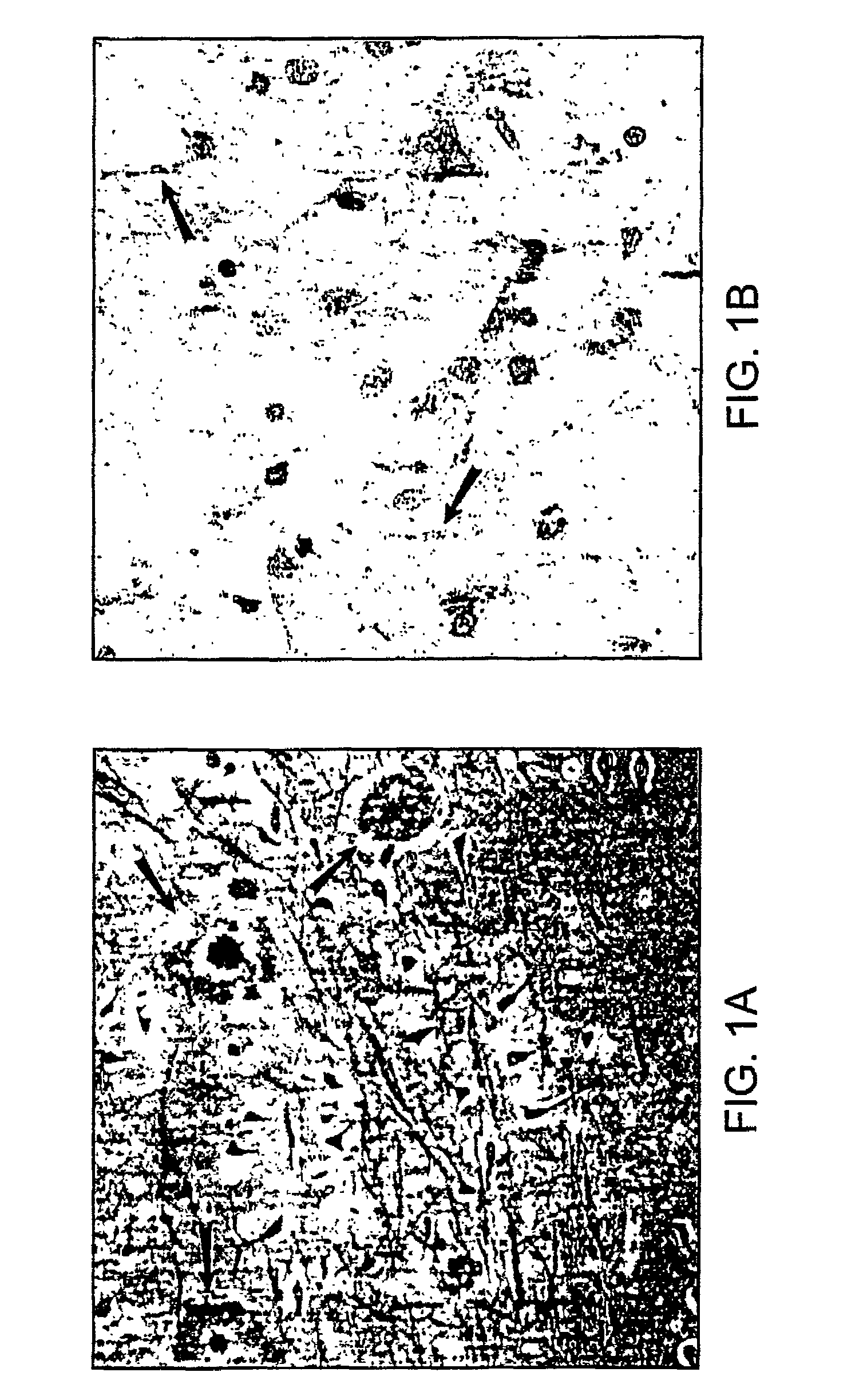Application of a viral complement inhibitory protein in the treatment and diagnosis of Alzheimer's Disease
a technology of alzheimer's disease and inhibitory protein, applied in the field of senile dementia new treatment, can solve the problems of increased inflammation, disease will become even greater, shape and synaptic integrity of cells cannot be maintained, etc., and achieve the effect of blocking complement activation
- Summary
- Abstract
- Description
- Claims
- Application Information
AI Technical Summary
Benefits of technology
Problems solved by technology
Method used
Image
Examples
example 1
[0145]The amyloid plaque is the hallmark of Alzheimer's disease (AD). The transmembrane domain and a portion of the C-terminus (Aβ) of the amyloid precursor protein (APP), are known to form the nucleus of the amyloid plaque. It has been demonstrated recently, using in vitro assays, that the Aβ peptide can activate both the classical (antibody-independent) and alternate pathways of complement activation. The proposed complement activation is due to the binding of Aβ to the complement components, Clq and C3, respectively, which initiate formation of the proinflammatory C5a and C5b-9 membrane attack complex. In this example, we have investigated the in vitro findings for the likely complement-dependent proinflammatory properties of the Alzheimer's disease Aβ peptide. We have performed experiments using congenic C5-deficient and C5-sufficient mice injected with synthetic Aβ and recombinant polypeptide (C-100) containing Aβ. Injection of C-100 into C5-sufficient mice induced a clear incr...
example 2
Surface Exposed Conserved K / R-X-K / R Sites and Net Positive Charge on Poxviral Complement Control Proteins Contribute to Heparin Binding and to Inhibition of Molecular Interactions with Human Endothelial Cells
[0170]The most recently identified property of the multifunctional VCP (vaccinia virus compliment control protein) is its ability to bind heparin. It has been shown in previous studies, as well as this one, to exhibit lysozyme-like heparin binding activity. Because of this activity, VCP can be taken up by mast cells and possibly persist in the tissue for extended periods of time, helping to preserve the viral habitat (Kotwal, G. J., 1998. D. E. 10th International Congress of Immunology 1:315–320.). It has also been shown to reduce chemotactic migration of leukocytes in the presence and absence of the chemokine MIP-1 α (macrophage inflammatory protein-1 alpha). This suggests that VCP can bind to heparin-like molecules lining the surface of endothelial cells, blocking chemokine bi...
PUM
| Property | Measurement | Unit |
|---|---|---|
| Inhibition | aaaaa | aaaaa |
Abstract
Description
Claims
Application Information
 Login to View More
Login to View More - R&D
- Intellectual Property
- Life Sciences
- Materials
- Tech Scout
- Unparalleled Data Quality
- Higher Quality Content
- 60% Fewer Hallucinations
Browse by: Latest US Patents, China's latest patents, Technical Efficacy Thesaurus, Application Domain, Technology Topic, Popular Technical Reports.
© 2025 PatSnap. All rights reserved.Legal|Privacy policy|Modern Slavery Act Transparency Statement|Sitemap|About US| Contact US: help@patsnap.com



